Is this world worthy to be destroyed? _ Yunkyoung Kim
-
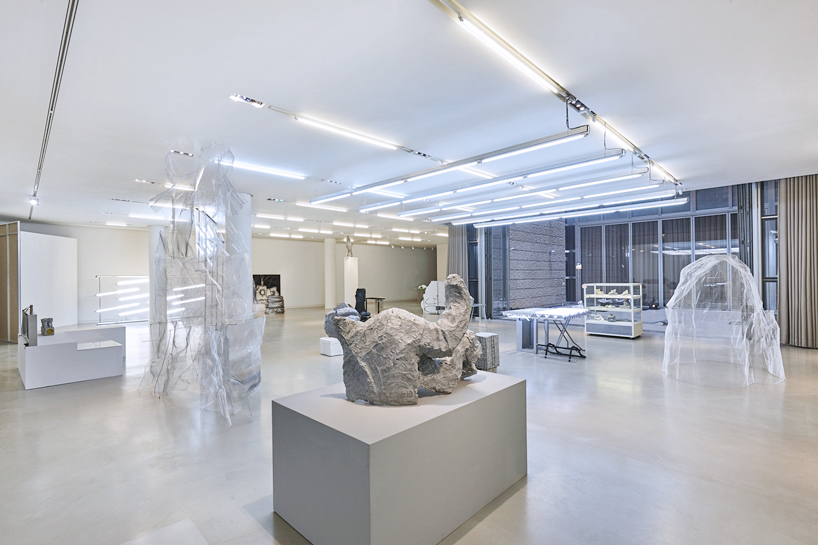 Multipurpose HenryPhoto Kiyong NAM ⓒ Fondation d’entreprise Hermes
Multipurpose HenryPhoto Kiyong NAM ⓒ Fondation d’entreprise Hermes -
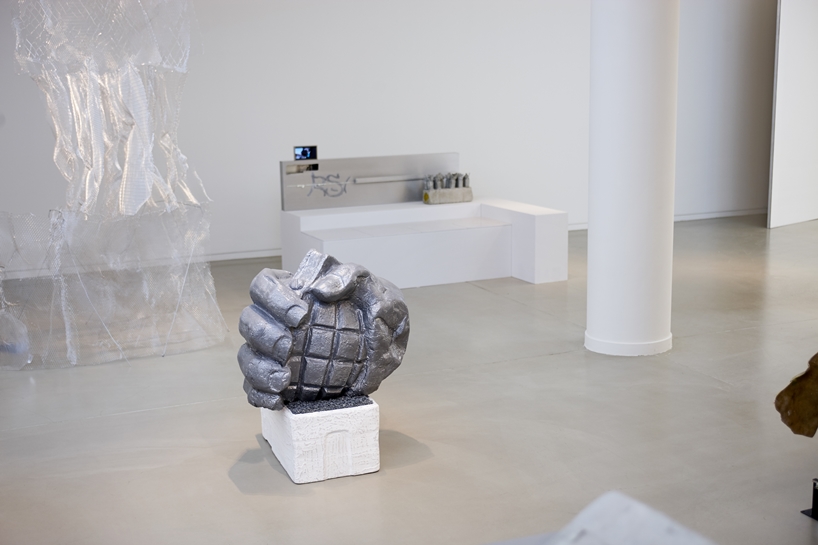 Big Hand with Grenade2019, FRP, mixed media, 90x70x60cm
Big Hand with Grenade2019, FRP, mixed media, 90x70x60cm -
 Filing Public HandsProcess
Filing Public HandsProcess -
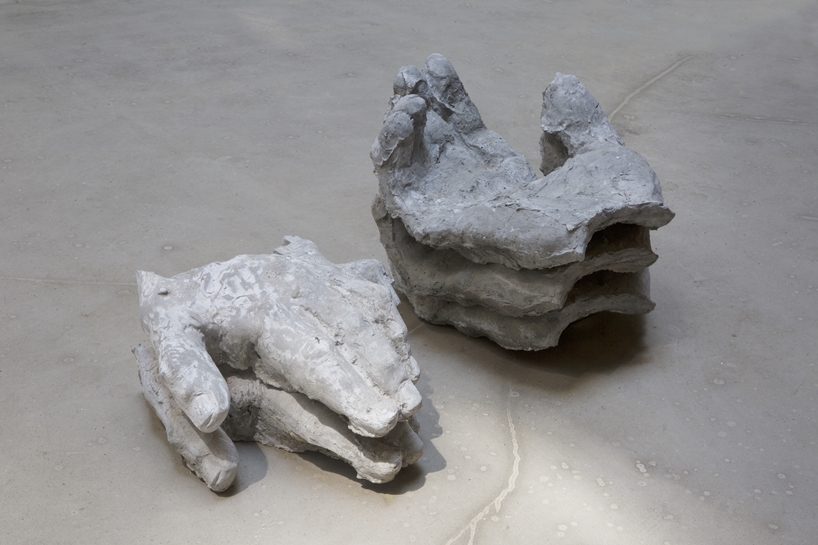 Filing Public Hands2018, concrete
Filing Public Hands2018, concrete -
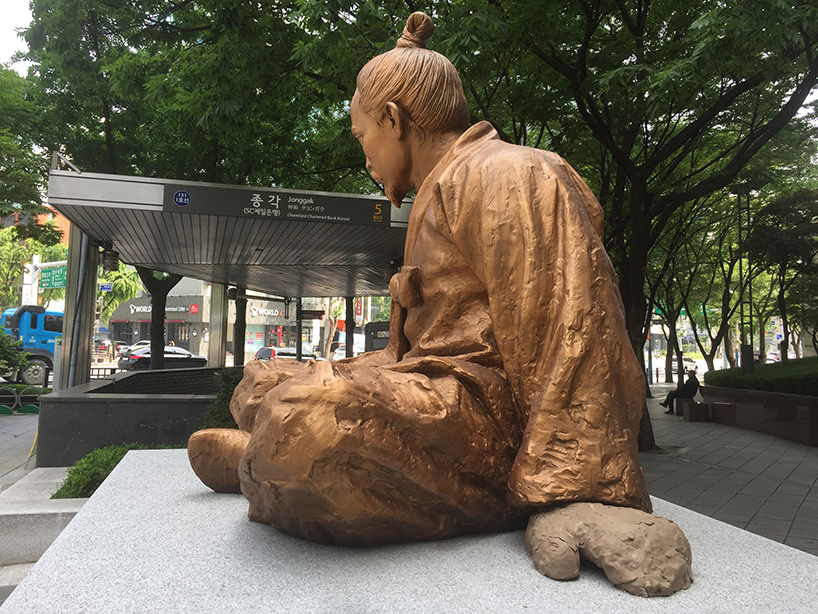 Filing Public Hands
Filing Public Hands -
 Filing Public Parts
Filing Public Parts -
 Filing Public Parts2018, Art Sonje Center
Filing Public Parts2018, Art Sonje Center -
 Multipurpose Henry
Multipurpose Henry -
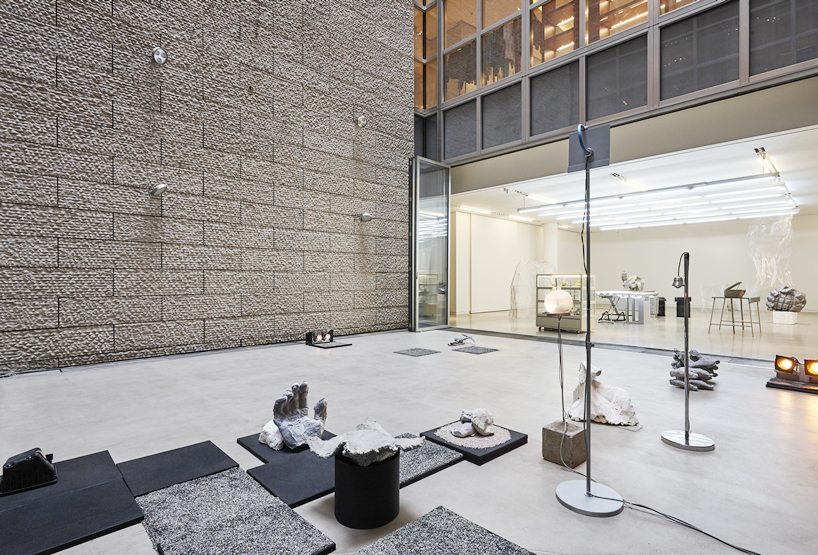 Sculpture GardenPhoto Kiyong NAM ⓒ Fondation d’entreprise Hermes
Sculpture GardenPhoto Kiyong NAM ⓒ Fondation d’entreprise Hermes -
 Multipurpose HenryPhoto Kiyong NAM ⓒ Fondation d’entreprise Hermes
Multipurpose HenryPhoto Kiyong NAM ⓒ Fondation d’entreprise Hermes -
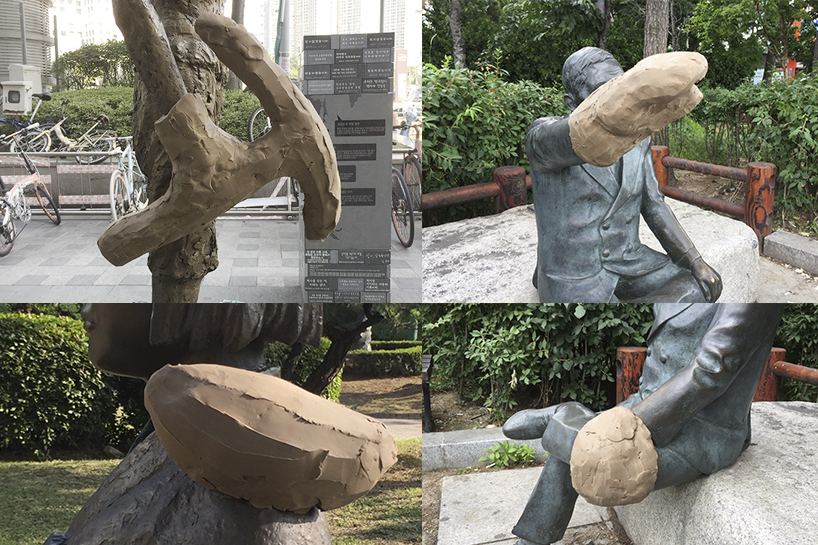 Filing Public HandsProcess
Filing Public HandsProcess -
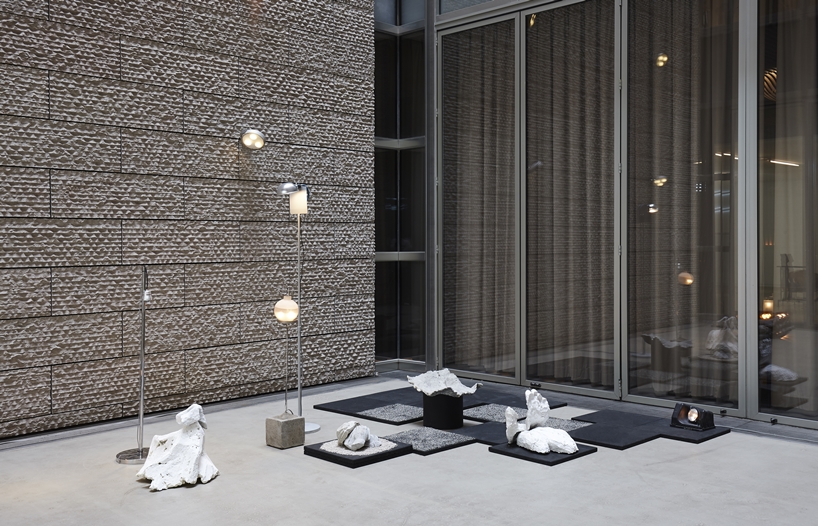 Sculpture GardenPhoto Kiyong NAM ⓒ Fondation d’entreprise Hermes
Sculpture GardenPhoto Kiyong NAM ⓒ Fondation d’entreprise Hermes
Is this world worthy to be destroyed?
Yunkyoung Kim (Curator, Atelier Hermès)
Close your eyes and try to recall your memory. Think of the sceneries you happened to encounter on streets you would easily pass by in downtown Seoul and new towns around it. What is being envisioned? Are those that are placed off the road seen from a car in a congested city popping up in mind, which are at the entrance of a high-rise building, or which are in the middle of a park for a leisurely stroll? In such places always sculpture is found. The Statue of Admiral Chung Mu Gong Yi Sun Shin[1] placed on the intersection of Sejongdaero at the center of Seoul and Spring[2] in Cheonggye Plaza exude their presence with their grand scale, but they do not leave that much impression in the mind of most of the people that reminisce the places. Not only that, so many sculptures that are not in any particular forms without an enormous scale and are not placed in noticeable spots are not event recognized by people. Thus, despite the (physical) presence of the sculptures, they are (semantically) absent.
Such sculptures known as “public art” share our lives and space much more than we perceive. These sculptures referring to the overall artistic practices that are envisioned and realized based on the assumption of being shown in public places of a city usually share their origin with the field of sculpture or “monuments” which have functioned to commemorate or remember a particular incident or figure. The commemorative function which is closely related to the memory of the power in authority gradually diminished after the modern period, and the term of modernism accelerated abstraction of sculptures. Eventually, numerous sculptures that take up urban spaces in today’s world are positioned somewhere between traditional monuments and abstract decorations. And although they are placed in the center of the city, they seem to exist by pushing aside from the view and interest of urban people.
As such, public sculptures taking up an ambiguous prestige in a contemporary city, they become such intriguing objects of Jung Jihyun. “Henry” in Multipurpose Henry which is the title of the exhibition refers to Henry Moore (1898-1986), a representative British modern sculptor. It connotates his sentiment in viewing the sculptures emulating the artistic style[3] of modern master that appear in diverse contexts in many places in a city and their byproducts.
Sculptures found in a city can be roughly classified into two categories: statues of great people, and patriots/veterans established under the leadership of the government or an institution, and sculptures standing in front of a building by implementing the “art in architecture program.”[4] Although it would be challenging to generalize all, while the former works were produced based on mostly realistic representation by referring to the standardized portraits set by the government,[5] the latter works are mostly modernist (abstract) sculptures where striking a harmony with buildings or surrounding sceneries was considered. The two types of sculptures have been intended and designed with different purposes, since they dominate public places in the name of “art,” they partially share the aesthetic sentiments and standards based on the public interest.[6] What attracted Jung’s attention is such a unique aesthetic sentiment shared by the public sculptures. And from the surface of a city shrouded with the aesthetic sentiment which is familiar, and yet unknowingly awkward looking, Jung understands the hidden aspects of the reality he confronts.
Jung’s doubts and questions that started off from numerous public sculptures discovered by being neglected and abandoned in each corner of a city like byproducts or waste of the contemporary society, while losing their original intent and purpose, reveal differences in the perspective of seeing and perceiving art. This in turn is led to the visualization of endless mismatching of different senses, tastes and beliefs in viewing and perceiving the contemporaneous reality. True, sculptures taking up the public place seem to reflect the aesthetic sentiment of many, but Jung grasps today’s reality where they are nothing more than the representation of totalitarianism in disguise of the authority of institutions by ignoring the existence of individuals, being reduced to fiction under nobody’s possession. A reality replete with fakes in disguise of truths, and a reality where the bygones still dominate the present spots—it is neither true nor fake, and neither past nor present. It is a fake existing within truth, and the past within the present. Therefore, it negates truths and the present by destroying the continuity of truths and that of the present. Jung pays attention to such points of chaos and overlap, and those of surplus.
All types of byproducts and waste generated from lives of the contemporary are the bygone past of a city but still form parts of today’s urbanscape. Jung Jihyun repeatedly collects, disassembles and reassembles the fragments (whose source has become ambiguous) of byproducts and waste derived from urban living by sensitively responding to the surface and the hidden aspects of such sceneries. Discarded signboards and structures are imposed with new forms and usages through disassembling and reassembling, and no-longer-useful electronic products and everyday life items are combined as parts of some other entirety by maintaining their forms (or having their surface kept like ghosts). Things that are strange that seem to float by being mixed up together and things that are not defined as “art,” thereby seeming to be fake are not derived from some logical causalities but result from incidental events and reasoning over the incomprehensible. And the gallery is simply in a state of temporality filled up with such stuffs.
Jung adds another layer on top of them. He casts parts of public sculptures that are not seen by being neglected and discarded in building corners or behind buildings in plasticine, and recombines them with other collected goods, makes some form instantly by using aluminum mesh, and temporarily builds into transient and variable forms. Just like all types of byproducts and waste brought in by Jung into the gallery, neglected and forgotten public sculptures are also the traces of the past that destroy the continuity of the present. As such, the order of the original in each object is disrupted and reversed in Jung’s manner in the course of recombining all fragments gathered from different sources by dismantling traces of the past and bringing the fragments in completely different contexts.
Jung makes attempts to cause a crack on the surface of this world with his small gestures in the reality filled up with truth-mimicking fakes, the reality where bygones still take up the present spots and this world where everything is unclear and uncertain. And all of this begins from the “hands of the artist himself,” being the only physical reality (bring true and present) Jung depends on. And yet, the process of collecting and recombining fragments from the world where fakes replace truths and the past encroaches the present does not pursue what is fixed. In other words, there is an expectation for a new start towards something which cannot be defined, instead of creating a new system that can replace the existing one and confirm on it. Jung’s “hands” seek for a changeable, temporary and unstable state in each moment, instead of firming up the basis to be stably fixed in a new order. Therefore, the gallery unfolds new possibilities of another order sought through rebellious attempts triggered in urban and living spaces.
As such, the gallery unfolds processes where fragments are demolished, collected and recombined which used to form a distorted and tweaked reality by being fixated “now” “here” due to customs and institutions which do not belong to “now” “here.”[7] Eventually, wouldn’t the exhibition Multipurpose Henry be a process of visualizing the invisible being hidden by the uniform and familiar surface as well as the outcome of struggling attempts to resort to his own hands (manual crafting) as the physical reality and reconcile with the chasm-discrepancy-crack-discord with the established/existing world-system-institution experienced by the (post) Internet generation living in this world? Now, let’s ask the question: Is this world worthy to be destroyed?
[1] For the sculpture of Chung Mu Gong established in Green Zone No.1 of Sejong Intersection on April 27, 1968, President Park Chung Hee made a financial contribution and hand-wrote “The Statue of Admiral Chung Mu Gong Yi Sun Shin.”
[2] It is a collaborative work of Claes Oldenburg (b.1929) and Coosje van Bruggen (1942-2009), which was completed on September 29, 2006. About 3.4 billion won was used for installing the sculpture which was 20m high, and KT sponsored the entire production cost as a donator. Some in the artistic circles stirred controversies on the installation of Spring, mentioning public interest of public art, cultural flunkeyism and unilateral red tape.
[3] The “artistic style of modern master” mentioned here refers to the flow of organic abstract sculpture represented by Henry Moor, usually encompassing sculptures suggested as chunks of metaphors on organisms by simplifying and abstracting the traditional image of a human body.
[4] It is a regulation to encourage a certain percentage of amount out of the total construction cost to be used for installing art works including paintings, sculptures or craftworks for those seeking to construct a building of a certain scale.
[5] They are portraits painted under the leadership of the government to unify funeral portraits and statues for historically great people. All the standardized portraits set by the government are designated or lifted in accordance with the deliberation procedure of the “Regulation on the Review of Funeral Portraits/Statues” designated as a directive of the Ministry of Culture, Sports and Tourism.
[6] The “aesthetic sentiments and standards based on public interest” might be a controversial expression and could be my subjective thought, but it could mean “senses and standards in pursuit of no comment (no interest) instead of favorable (praise) or hate (criticism) comments.”
[7] The scene of a gallery is a state of some possibility, so it is reversed into a different scenery upon each encounter with individual senses of each viewer.